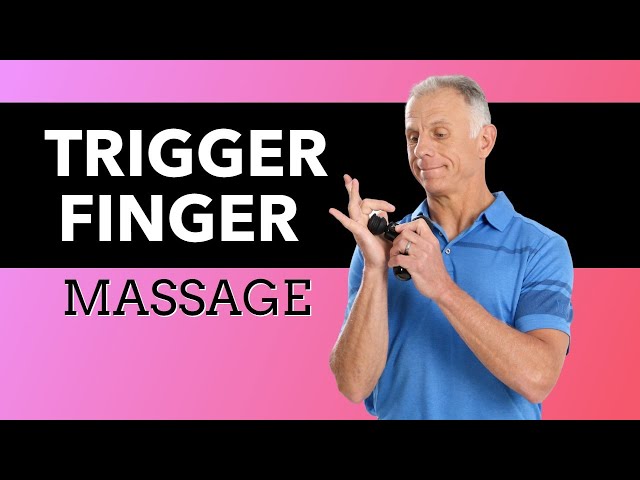Trigger finger, medically known as stenosing tenosynovitis, is a condition where one or more fingers become painful, stiff, or locked in a bent position. It often causes a snapping or clicking sensation when moving the affected finger, which can be both frustrating and limiting in daily life.
What Causes Trigger Finger?
Trigger finger develops when inflammation narrows the space within the sheath that surrounds the tendon in the affected finger. This inflammation can cause the tendon to catch or lock when bending or straightening the finger. Common causes include:
- Repetitive gripping motions
- Overuse of the hands
- Underlying conditions like diabetes or rheumatoid arthritis
How a Massage Gun Can Help
Massage guns deliver percussive therapy—rapid pulses of pressure that penetrate deep into soft tissues. When applied correctly, this can:
- Relax tight muscles in the forearm
- Reduce tension near the inflamed tendon
- Improve circulation to promote healing
Step-by-Step: Using a Massage Gun for Trigger Finger
1. Start with the Forearm Muscles
The muscles controlling your fingers are located in your forearm, so start here to release tension at the root.
- Use a soft attachment (like a round or air-cushion head)
- Begin at the lowest speed setting
- Massage from the elbow down to the wrist for 2–3 minutes
- Gradually increase speed and pressure as comfortable
2. Target the Tendon Area
- Once the forearm is relaxed, gently massage around the base of the affected finger.
- Focus on the area where the finger catches or clicks
- Use your thumb to apply light pressure in small circles
- Combine thumb massage with light massage gun pulses for deeper relief
3. Add Gentle Movement
Incorporating slow finger movement while massaging—called “tendon flossing”—can help restore mobility.
- Slowly bend and straighten the affected finger
- If it becomes painful or locks up, stop and return to static massage
Important Reminders
- Start gently: Too much pressure can worsen symptoms
- Be consistent: Daily sessions bring the best results
- Listen to your body: If it hurts, ease up or stop
The Bottom Line
Massage guns can be fantastic tools for the right situations, but they're not appropriate for every body part or condition. By avoiding these 10 danger areas, you can safely enjoy the benefits of percussion therapy without risking injury or complications.
Always start with the lowest setting when trying a massage gun for the first time, and remember that more pressure isn't always better. When in doubt, consult with a physical therapist or healthcare provider about the safest way to use your massage gun for your specific needs.
Recommended Massage Guns for Safe Recovery
The Ultimate Compact Massage Gun with Dual Therapy
The C2 Pro combines percussion therapy with innovative heat and cold treatment options in a compact design. With moderate power and multiple speed settings, this versatile massage gun works effectively for most users.
The Best Mini Massage Gun for On-The-Go
Don't let its mini size fool you—the Q2 Pro delivers decent power and dual heat/cold therapy in an ultra-portable package. Ideal for on-the-go recovery, this lightweight device fits easily in gym bags or purses while maintaining enough strength for effective muscle release. Perfect for travelers and busy professionals.
The Most Powerful Massage Gun for Professional Recovery
The D6 Pro offers exceptional power that rivals professional devices at an accessible price point. With industry-leading stall force and amplitude, it's designed for deep tissue work on dense muscles. Athletes and bodybuilders will appreciate its professional-grade performance for serious recovery needs.
FAQs About Massage Gun Safety
Q: Can I use a massage gun every day? A: For most healthy individuals, daily use on appropriate areas is fine, but it's best to give tissues a chance to recover between sessions.
Q: How long should I use a massage gun in one area? A: Generally, 1-2 minutes per muscle group is sufficient. Longer isn't necessarily better.
Q: Are cheaper massage guns safe to use? A: Quality varies widely. Look for reputable brands with safety features and multiple head attachments for versatility.
Q: Can children use massage guns? A: With supervision and on appropriate settings, older children may benefit, but always consult with a pediatrician first.
Q: Should massage guns hurt during use? A: No. You should feel pressure and perhaps mild discomfort, but never pain. If it hurts, stop immediately.



Share:
Massage Guns: Why They Work & How To Use
How to Use a Massage Gun for Calf Muscle Pain